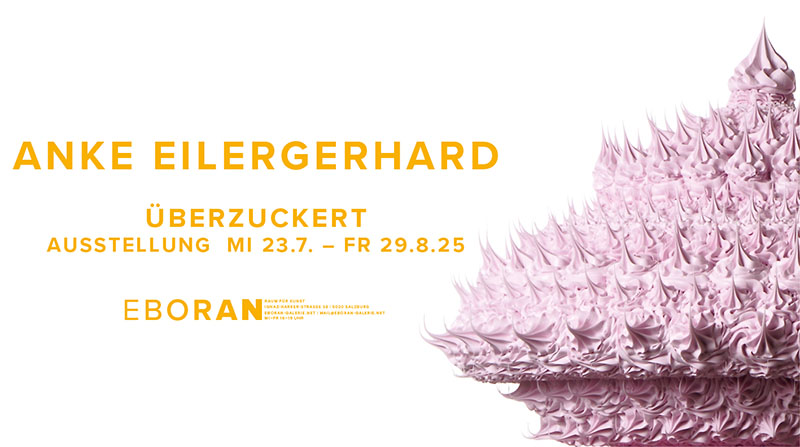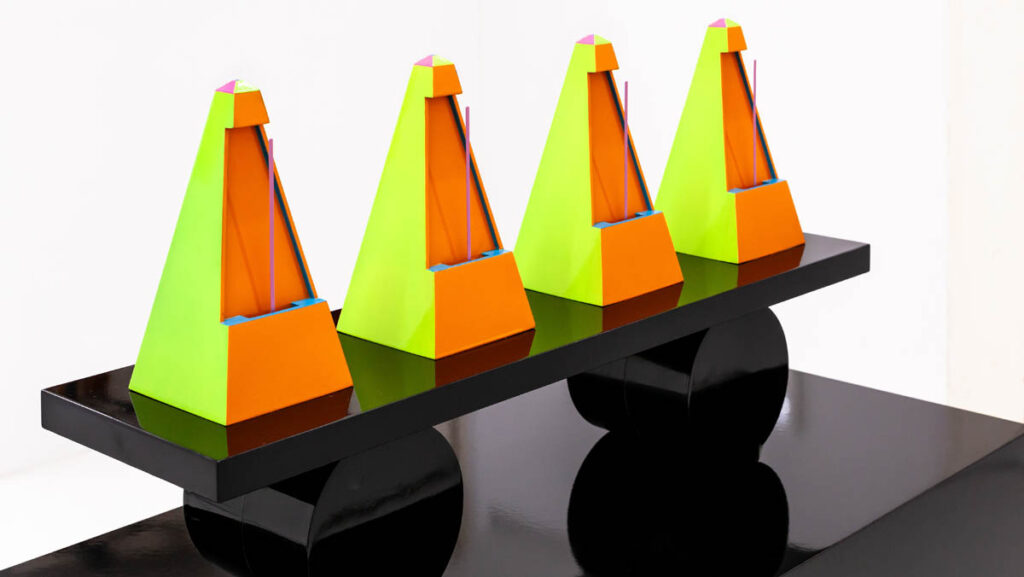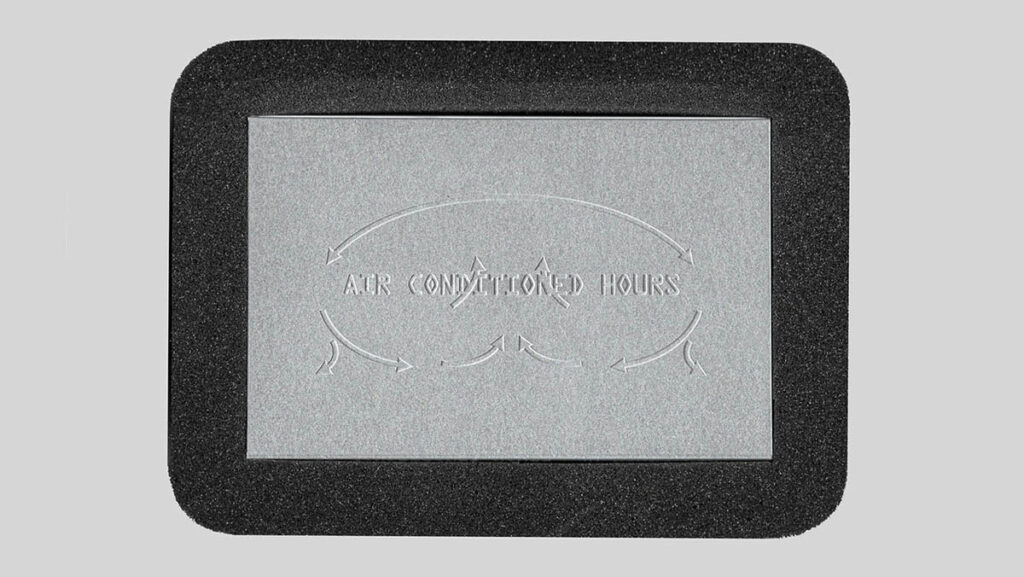
How did you both meet and what is the connection between your works, if there is one? How do you see your artistic paths in relation to each other?
Ron and Hillel: We both studied at Hamidrasha Art School, where we now teach. We got to know each other better after our labor union activity within the college, during a fierce struggle to change the employment conditions of the teaching staff. We are both passionate about social issues, namely the Israeli occupation of the West Bank and Gaza, and have a shared vision of equality and freedom of all people between the river and the sea… and for that matter, around the world. Though our art practices are different, Ron using direct photography and Hillel using multimedia techniques, both of us place an emphasis on Seeing as a political faculty, rather than just a cognitive one. We are trying to expand our viewers‘ field of vision, and truly believe in the political power of art.

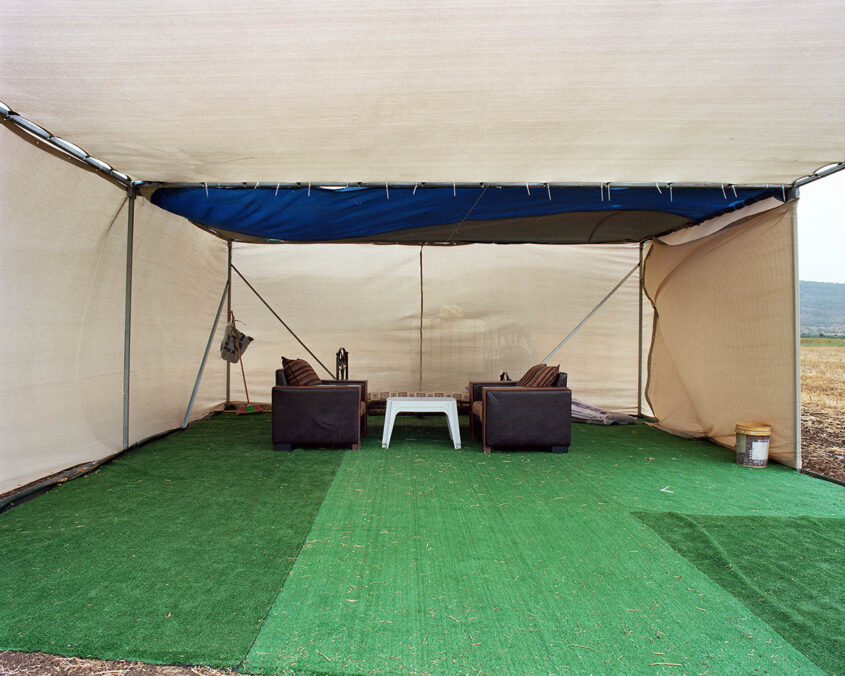
Hillel, can you describe the role of charcoal in your work and what it represents in your artistic practice?
Hillel: I have been using charcoal since early on for sketches, but at some point, it took center stage. I am drawn to its primordial character and its austerity which is contrasted by its potential visual richness, and its special ability to depict light and darkness – with all the metaphorical implications. I feel that charcoal’s rudimentary character, places it on the very edge of culture, outside of the economic system, you only need a stick that once burned, nothing more. So, there is a whole relationship here between the vastness of images and stories produced by culture and this very basic material, which tells us something profound about the beginning and the end of civilization. I have been working with charcoal for almost two decades now, starting from quick small-scale drawings which evolved to the very big and dramatic drawings such as the ones in this show as well as others.
Ron, your work explores the intersection of photography and social issues. How do you approach your long-term projects, and what drives your commitment to such a deep, ongoing process?
Ron: My work uses still photography and video as a research tool that aims to raise critical questions and issues in relation to the place and time in which I live – Israel in recent decades.
My starting point and my main ambition are a combination of an interest in meeting people and quite a few issues that trouble me here in Israel.
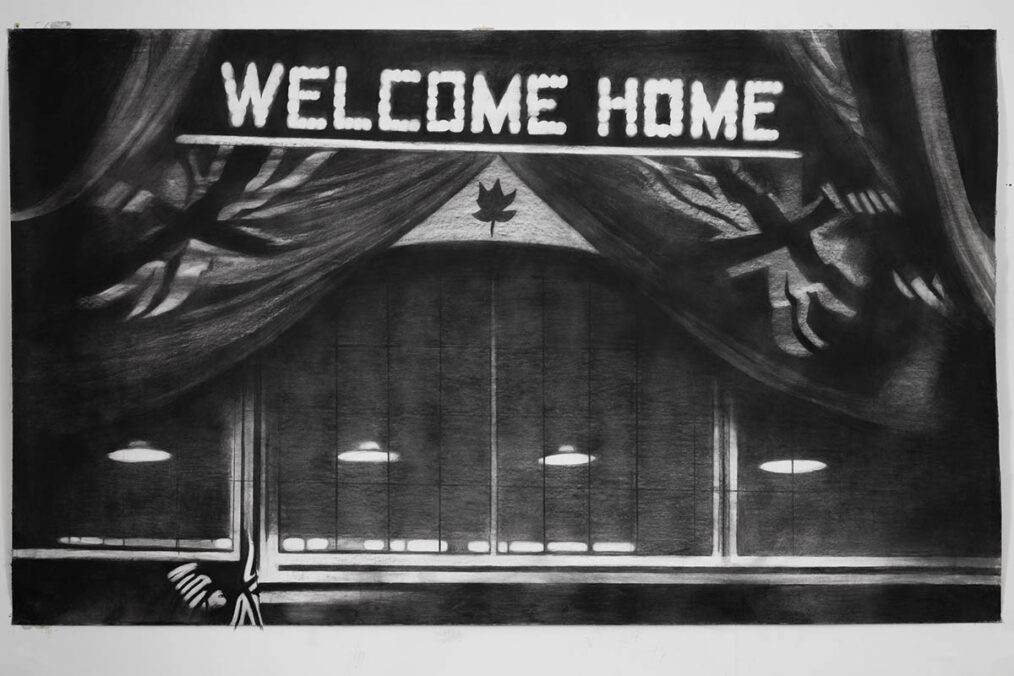
I wander a lot and try to stay alert, a long-term project can start from a chance encounter with someone I meet (e.g., Invisible Presence project), or the news of a detention facility that Israel is building to incarcerate asylum seekers. This random event would be followed by traveling far into the desert and through a slow acquaintance with those staying there (Doing Time in Holot project). Most projects are based on a long trusting relationship with the subjects, and in a certain sense the design and formulation of the project is also done by the subjects, their desires, and ideas that relate to their daily life and stem from the situation they are in.
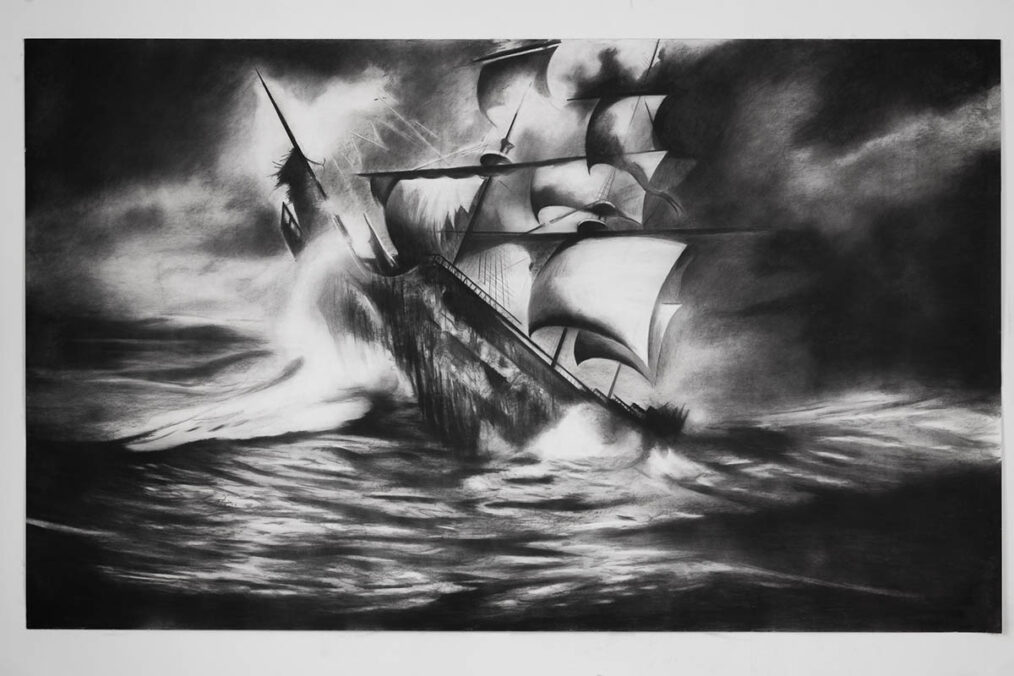
What are the central themes in your current exhibitions, and how do they reflect your individual artistic inquiries or collective observations of society?
Hillel: in this exhibition, I’m three types of works, a series of prints that originated from an image generator replying to a prompt requesting “Utopian cities seen from a distance at night”, I’m also showing a communal musical instrument which I designed and built, containing only the notes for playing “Amazing Grace”, and three large charcoal drawings depicting images that I chose for their relationship to mythical stories of warriors. I worked on the works separately, not knowing how or when they would come together, I think they all relate to the harsh violent nature of our time, and seek a way to cut through this seemingly unavoidable narrative of constant war and carnage: The image of the burning ship started from the saying “Burn the ships!” attributed to Cortez who wanted to deny his men the ability to go back home, forcing them to fight with him. I feel we should all be looking for these manipulations by our corrupt leaders, trying to bind us to their violent struggle instead of playing music with each other.

Ron: In the current exhibition, I am photographing near where I live in the Galilee, and I am interested in thinking and speaking through the works about the change that this place has undergone since the early 1980s, with the construction of a large security facility (Rafael) that is also a source of income, and the subsequent establishment of new Jewish settlements. Until then, this area in the Galilee was inhabited almost exclusively by Bedouins and Palestinians, and with the construction of the facility, its face changed.
The exhibition consists of photographs of the landscape and environment.
One group of works was photographed in „Batuf“ (the Arabic name for the Beit Netufa Valley), a huge undeveloped area divided into hundreds of small plots, all of which are privately owned by residents of the surrounding Arab cities (Arraba, Sakhnin, Menda). Alongside these plots, the owners of the plots and their families establish sitting and resting areas, which constitute an alternative to the overcrowding and lack of green spaces in Arab cities, and I photograph these areas.
Additional photographs depict a pastoral landscape with security references within it, as well as semi-security industrial zones.
The video works in the exhibition depict a crumbling place, as well as hints at a relatively new phenomenon in Israel, of children from the West Bank who are being forced to work from morning until night in abhorrent conditions selling accessories at major intersections in the Galilee.
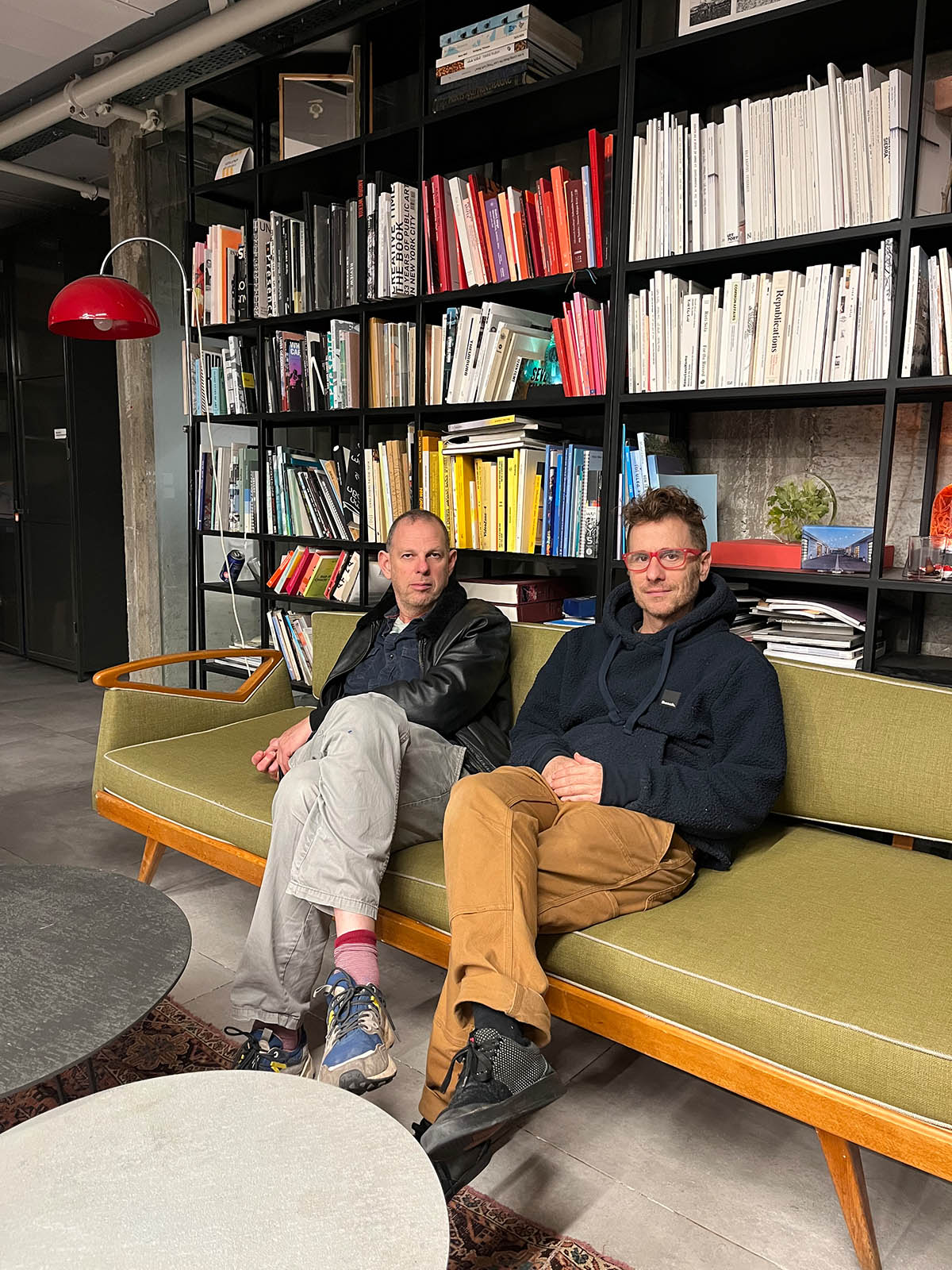
How do you navigate the balance between political content and artistic expression in your works, especially when tackling such complex and sensitive issues?
Ron and Hillel: We think that our works try to look at the infrastructure of our political situation, but paradoxically by looking aside to relatively minor or esoteric instances of ideology, a dull square building (housing Israel’s defense industries), a uniform badge (reminiscent of nazi paraphernalia), a water tank (which reminds us there is no water supply to some citizens), or a musical instrument (reminding us that we actually can create beautiful things together).
Solo exhibition: Ron Amir – Green Territory
Solo exhibition: Hillel Roman – Welcome Home
Address and contact:
Artport Tel Aviv
8 Ha’Amal Street, Tel aviv
www.artport.art
Hillel Roman artbook – www.sternthalbooks.com
Ron Amir – www.ron-amir.com
Hillel Roman – www.hillelroman.com, www.instagram.com/romanhillel/
Lital Megidish – www.instagram.com/litalmegidish/



